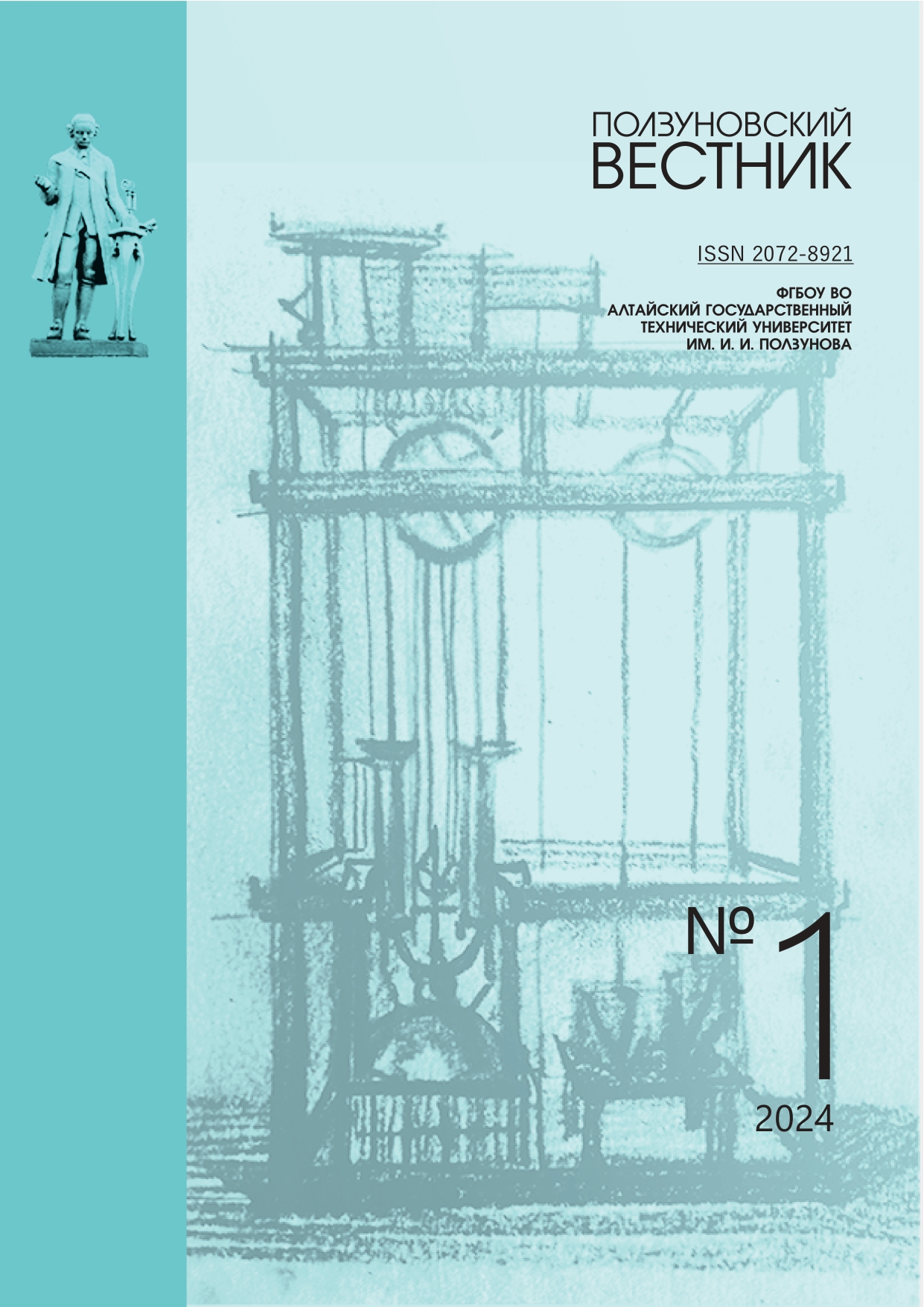DEVELOPMENT OF A RESEARCH STAND FOR STUDYING THE INFLUENCE OF SHOCK-WAVE PRESSURE AS AN INDEPENDENT FACTOR OF ULTRASONIC CAVITATION IMPACT
GYRGSR
DOI:
https://doi.org/10.25712/ASTU.2072-8921.2024.01.023Keywords:
stand, ultrasound, cavitation, temperature, shock wavesAbstract
To date, the intensifying effect of ultrasonic cavitation on physicochemical processes is widely known. It has been repeatedly established that cavitation and related nonlinear phenomena (shock waves, acoustic flows, heating of the medium) accelerate physicochemical processes. However, modern studies of cavitation influence are either based on theoretical approaches, which as a rule consider shock-wave pressure separately without taking into account other factors, or on experimental studies, which determine the final efficiency of the process (the efficiency criterion depends on the type of process) under the action of a set of cavitation factors. While to ensure maximum process efficiency it is necessary to identify the effect of each factor separately to select modes and conditions of action (and, perhaps, and ways to modulate ultrasonic oscillations), which strengthen the factor that most influences the speed of the process, and weaken parasitic factors. In order to develop the direction of experimental studies of the influence of individual cavitation factors, a stand was developed, which makes it possible to influence the medium with an analogous change in temperature, as in the case of ultrasonic influence, but without shock-wave pressure formed by the collapse of cavitation bubbles.
References
Nor Saadah M. Yusof. A correlation between cavitation bubble temperature, sonoluminescence and interfacial chemistry / Nor Saadah M. Yusof, Sambandam Anandan, Palani Sivashanmugam, Erico M.M. Flores, Muthupandian Ashokkumar / Ultrasonics Sonochemistry. 2022. 85. P. 1–10.
Красильиков В.А. Введение в физическую акустику / В.А. Красильников, В.В. Крылов. М. : Наука, 1984. 403 с.
Голых, Р.Н. Повышение эффективности воздействия ультразвуковыми колебаниями на процессы в системах с жидкой фазой / Р.Н. Голых : автореф. дис. … канд. техн. наук. Бийск, 2020. 437 с.
B. Naidji. Influence of pressure on ultrasonic cavitation activity in room temperature ionic liquids: An electrochemical study / B. Naidji, L. Hallez, A. Et Taouil, M. Rebetez, J-Y. Hihn // Ultrasonics Sonochemistry. 2019. 54. P. 129–134.
Mamvura T.A. Energy changes during use of high-power ultrasound on food grade surfaces / T.A. Mamvura, S.E. Iyuke, A.E. Paterson // South African Journal of Chemical Engineering. 2018. 25. P. 62–73.
S Zhao. Acoustic cavitation and ultrasoun-dassisted nitration process in ultrasonic microreactors: The effects of channel dimension, solvent properties and temperature / S. Zhao, C. Yao, Q. Zhang, G. Chen, Q. Yuan // Chemical Engineering Journal. 2019. 374. P. 68–78.
Wong Ging King. Application of hybrid ultrasonic cavitation / adsorption and coagulation for treatment of palm oil mill effluent / Wong Ging King; Lee Man Djun; Augustine Chioma Affam; Wong Chee Chung; Ir. Wong Chee Swee; Johnson Olufemi Adebayo // Nucleation and Atmospheric Aerosols. 2019. P. 1–12
Downloads
Published
How to Cite
Issue
Section
License
Copyright (c) 2024 Roman N. Golykh, Vyacheslav D. Minakov

This work is licensed under a Creative Commons Attribution 4.0 International License.















 .
. This work is licensed under a
This work is licensed under a 
